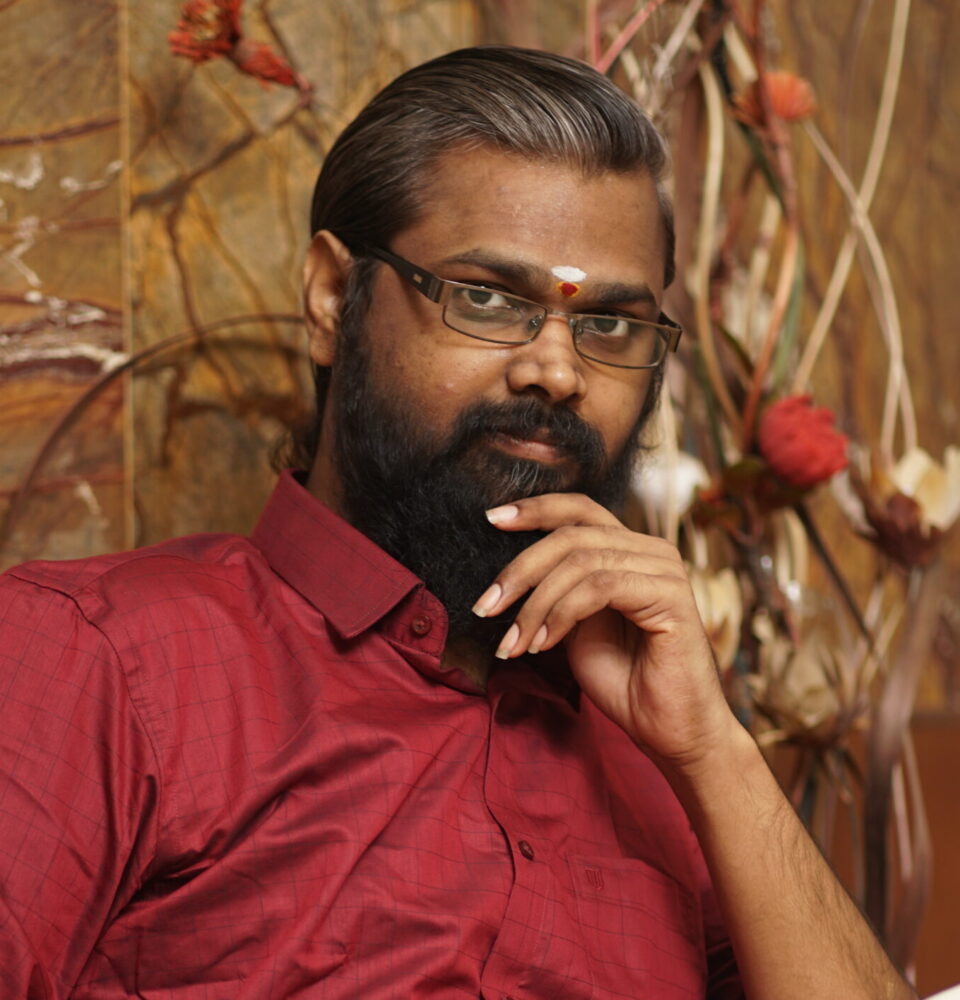
In the culturally rich town of Tirunelveli, Tamil Nadu, creativity meets purpose in the work of a man who’s using design not just to beautify, but to unify. A. Veera Ragavan, or AVR, as he is widely known in the Tamil film industry, has built a career that transcends visuals and enters the realm of vision—a vision where art is a bridge between religions, languages, and human hearts.
At the center of his growing acclaim is a remarkable design project—a logo that brings together the sacred symbols of Hinduism, Islam, and Christianity, intricately balanced in harmony. A blend of Tamil and English scripts completes the visual, making it not only a symbol of spiritual unity but also a tribute to linguistic inclusivity. More than a logo, it’s a message to the world—a message crafted from conviction, culture, and compassion.
From Engineering Equations to Emotional Expression
Like many young dreamers from small towns, AVR’s journey began with a practical foundation. He studied engineering—an education chosen for security, stability, and predictability. But beneath that structure pulsed a restless creativity. The allure of cinema, color, and storytelling proved stronger than any formula.
Eventually, AVR listened to that inner voice and stepped off the safe path, immersing himself in the world of design and film. It was a bold departure, but one that revealed his truest calling. Over the past seven years, he’s built a reputation as a highly respected designer in Tamil cinema, specializing in poster and title design. His creations are known for their cultural richness, emotive power, and artistic elegance.
Yet his most profound project wasn’t born in a studio—it began at a funeral.
The Moment That Changed Everything
In 2015, the nation mourned the loss of Dr. A.P.J. Abdul Kalam, India’s beloved former President and one of its most unifying figures. AVR attended the funeral in Rameswaram, expecting a somber ceremony. What he witnessed, however, left a lasting imprint on his soul.
People from every faith, every walk of life—Hindus, Muslims, Christians—stood side by side in respect and reverence. There were no barriers that day, only shared grief and admiration. In that powerful silence, AVR discovered a deeper truth.
“That day, I saw unity in its purest form,” he reflects. “No one asked who believed in what. We were just human beings, mourning someone who belonged to all of us.”
It was this deeply personal moment that planted the seed for what would become his most meaningful piece of work.
Art That Transcends Boundaries
With that vision in mind, AVR set out to create a symbol that would reflect togetherness. Not just aesthetically, but spiritually and emotionally. The result is a beautifully designed logo where the ‘Om’, the Crescent and Star, and the Cross are carefully placed—distinct, yet unified. The combination of Tamil and English scripts was a deliberate decision, a nod to his cultural roots and his embrace of global dialogue.
The design doesn’t erase the differences—it celebrates them, showing that distinct beliefs can coexist in harmony when grounded in respect.
The message is clear: faiths don’t have to clash—they can complement. Languages don’t have to separate—they can connect. And design doesn’t have to sell—it can speak.
Recognition That Echoed Beyond Borders
In 2024, AVR’s work received global attention when it was honored by the World Book of Records. It was a moment of validation—not just for his talent, but for the message behind the design.
Yet, AVR remains grounded. “The award was meaningful, but the real success is when someone looks at the logo and feels seen, included, and hopeful,” he says. “That’s why I created it—not for applause, but for awareness.”
His design has since been shared across platforms, classrooms, communities, and peace initiatives. It’s become more than an artwork—it’s become a symbol of unity in an increasingly fractured world.
Purpose-Driven Design
In an era where design often chases trends and algorithms, AVR’s work stands out for its depth, intention, and clarity of purpose. Whether he’s creating a striking film poster or a spiritual emblem, he approaches every project with the same question: what story does this tell?
To him, every piece of art should carry weight—not just visual appeal. His design philosophy is simple yet profound: “Design should reflect truth. It should touch people, not just impress them.”
This authenticity has earned him admiration not only in film circles but also among fellow artists, social advocates, and cultural thinkers.
A Voice for Future Creators
AVR’s journey from a modest background to national and international recognition is inspiring countless young artists. He often speaks to aspiring designers, urging them to explore what matters most to them, not just what sells.
“Stay close to your roots. Stay close to your reason. If you know why you’re creating, your work will always matter.”
His advice isn’t just technical—it’s emotional. And that’s what makes him not just a designer, but a mentor and messenger in his own right.
A Bridge Between Cultures, A Light for the Future
In the story of A. Veera Ragavan, we see more than the rise of a successful artist. We see a man who dared to imagine a kinder, more connected world—and used his talent to bring that vision to life.
From Tirunelveli to the Tamil film industry, and now to the global stage, AVR’s journey is a testament to the power of art to transform minds, touch hearts, and heal divisions.
His work doesn’t shout. It doesn’t argue. It simply invites you to look closer, to feel deeper—and to believe that unity is not a dream, but a choice.

